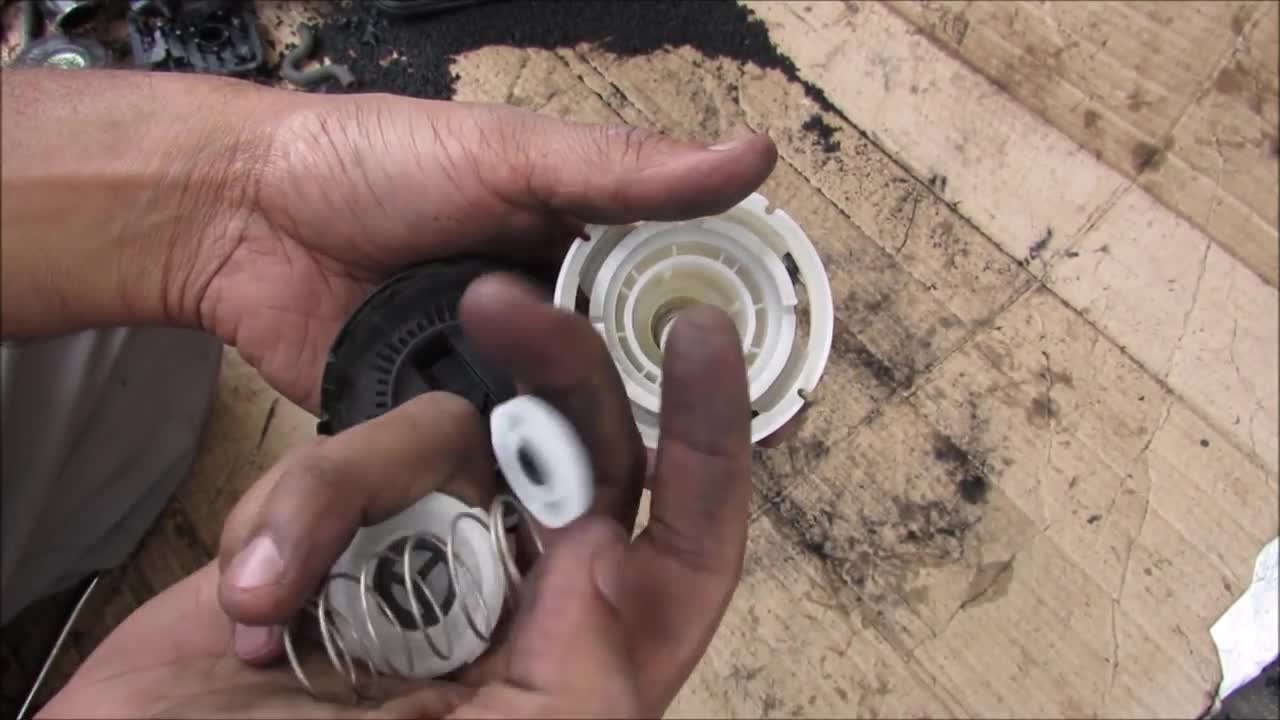Premium Only Content

How the EVAP System Works
Here's how the evaporative emissions and fuel system work on your car.
The EVAP system is responsible for venting harmful gasoline vapours from the gas tank into the atmosphere, causing smog.
It consists of the gas tank, filler neck, cap, vacuum lines, switching valves and the charcoal canister.
When the tank is being refuelled, the fill check valve is opened to vent building fumes in the tank to the charcoal canister. The charcoal absorbs the vapour, and will release it into the engine through the purge valve so it can get burned.
When the tank is full, the fill check valve has a float that rises and cuts off the vent line through a diaphragm. This prevents liquid fuel from entering the charcoal canister.
The vacuum switching valve allows the ECU to pull and hold a vacuum on the evap system for self diagnostic. Using the vapour pressure sensor, it can determine if there are leaks and throw a check engine light.
These self diagnostics are part of every car with OBD2, and are essential for an emission test to pass.
The fuel tank is also cut open, exposing the baffles inside, as well as the high and low points of the tank and inlet check valve.
Vacuum lines in between the gas tank, charcoal canister and air filter ensure air is directed for proper venting, purging and self diagnostic.
Care must be taken when working on the fuel system, as gasoline vapours are extremely flammable.
-
 18:03
18:03
Nikko Ortiz
1 day agoEBT Meltdowns Are Insane...
3.72K10 -
 9:03
9:03
MattMorseTV
13 hours ago $3.72 earnedTrump’s America First CALL TO ACTION.
7.17K29 -
 17:33
17:33
a12cat34dog
19 hours agoRUMBLE TAKEOVER @ DREAMHACK | VLOG | {HALLOWEEN 2025}
36.7K25 -
 10:48
10:48
GritsGG
12 hours agoWarzone Stadium Easter Egg! Unlock Grau Blueprint EASY!
1.96K -
 LIVE
LIVE
Lofi Girl
3 years agolofi hip hop radio 📚 - beats to relax/study to
120 watching -
 1:43:54
1:43:54
TruthStream with Joe and Scott
3 days agoStuey and Elisa V interview Joe and Scott Q, AI, Glutathione, Tylenol etc 11/5 #510
6.12K4 -
 29:15
29:15
BlabberingCollector
2 days agoHarry Potter X Fortnite, Fans Reee Over Trans Rights, NEW Audiobooks Are OUT, Wizarding Quick Hits
26K1 -
 1:20:42
1:20:42
The Connect: With Johnny Mitchell
6 days ago $8.06 earnedThe Truth Behind The U.S. Invasion Of Venezuela: Ed Calderon Exposes American Regime Change Secrets
31.5K13 -
 2:10:18
2:10:18
FreshandFit
5 hours agoAfter Hours w/ Girls
123K23 -
 2:06:29
2:06:29
TimcastIRL
11 hours agoAirlines Cancel Over 700 Flights, Travel APOCALYPSE Is Now, Trump Says END FILIBUSTER | Timcast IRL
227K101